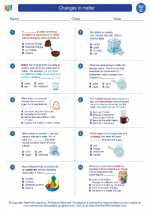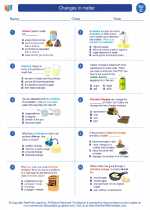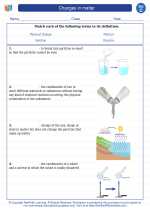Liquids
A liquid is one of the four fundamental states of matter (the others being solid, gas, and plasma). It has a definite volume but no definite shape. Unlike a gas, a liquid does not expand to fill any container it is placed in. Instead, it takes on the shape of the container. Liquids have the ability to flow and can be poured. They also have a free surface in a gravitational field, which makes them distinguishable from gases.
Properties of Liquids:
- Fluidity: Liquids have the ability to flow and take the shape of the container.
- Viscosity: This refers to the resistance of a liquid to flow. Some liquids, like honey, are more viscous than others, like water.
- Surface Tension: This is the property of a liquid that allows it to form a thin layer on its surface due to the cohesive forces between its molecules.
- Compressibility: Liquids are generally considered to be incompressible, meaning they cannot be easily squeezed into a smaller volume.
- Density: Liquids have a specific density, which is the mass per unit volume. Different liquids have different densities.
Examples of Liquids:
Some common examples of liquids include water, milk, juice, oil, vinegar, and alcohol.
Changes in State:
Liquids can change to a solid state through a process called freezing, and to a gas state through a process called evaporation or boiling. The temperature at which a liquid changes to a gas is called its boiling point, while the temperature at which it changes to a solid is called its freezing point.
Study Guide:
Here are some key points to remember about liquids:
- What are the properties of liquids?
- Give examples of liquids in daily life.
- How do liquids change state?
- What is viscosity and how does it vary in different liquids?
- Explain the concept of surface tension in liquids.
[Liquid] Related Worksheets and Study Guides:
.◂Science Worksheets and Study Guides Third Grade. Changes in matter

 Worksheet/Answer key
Worksheet/Answer key
 Worksheet/Answer key
Worksheet/Answer key
 Worksheet/Answer key
Worksheet/Answer key
 Vocabulary/Answer key
Vocabulary/Answer key
